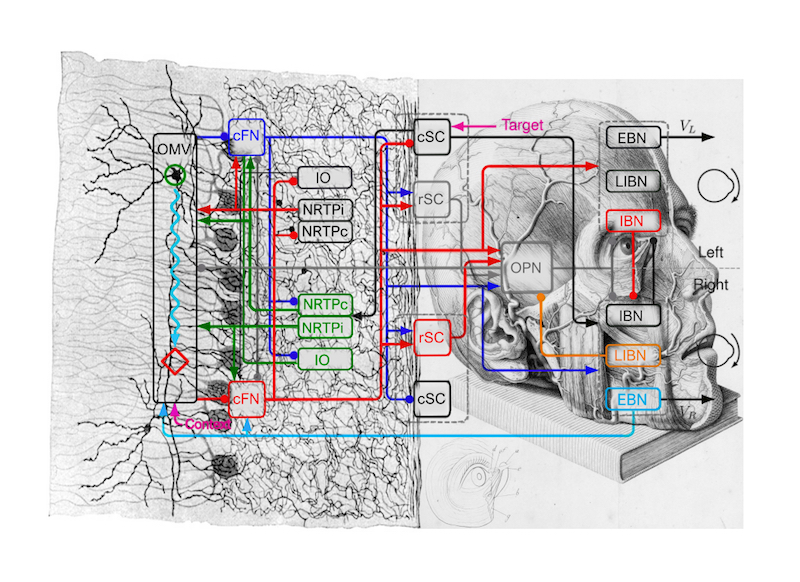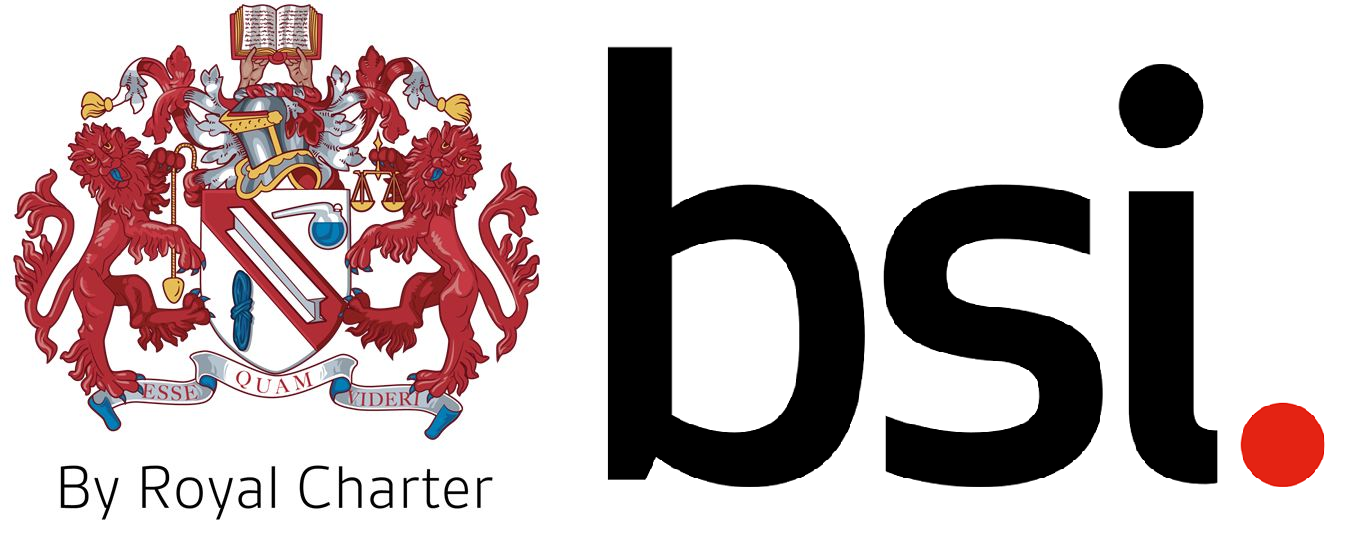Info about congress

Abstract submission and early bird deadlines extended to April 15th
To celebrate the work of our friend and colleague Dr. Lance Optican for his outstanding contribution to the understanding of sensorimotor systems and neurological disorders through mathematical modeling we are organizing a three-day meeting in Pavia, Italy, June 6th - 8th.
In order to stimulate the interest for the interdisciplinary field of mathematical modeling applied to both eye movements and to other sensorimotor systems we have organized the occasion around two programs.
First, in the mornings, there will be a short course with didactic lectures, aimed at introducing more basic and clinical researchers to the use of mathematical models in scientific and clinical investigation. Most lectures will have two teachers: the first presenting a mathematical modeling topic and the second will emphasize the implications of the proposed models both in health and disease, presenting interactions between basic physiology and clinical problems.
Second, in the afternoons there will be a more traditional research meeting with platform and poster presentations on the various issues related to modeling in the field of motor neuroscience.
With this event we hope to attract a wide audience including students (hopefully some of whom will become future colleagues), postdoctoral fellows and junior scientists, as well as established leaders in our field, both in research and teaching.
Short course
The short course is intended for a wide audience, including researchers with a non-engineering background, as the lectures will lead the public through the basic modeling principles to the more advanced techniques.
Lectures:
1 From differential equations to linear control systems.
2 Closed loop and non-linear systems.
3 State-space equations and learning.
4 Integrators and optimal control.
5 Bayesian modeling in perception and decision making
6 Maps and sensorimotor transformations
7 Neuromimetic models and oscillations.
Confirmed course speakers
Modeling
Henrietta Galiana, Stefan Glasauer, Philippe Lefévre, Daniel Merfeld, Lance Optican, John Van Opstal, Reza Shadmehr
Clinical
Joseph L. Demer, R. John Leigh, Janet Rucker, Barry Seemungal, Aasef Shaikh, Dominik Straumann, David S. Zee
Research meeting
You are invited to submit a research abstract for the afternoon meeting "Mathematical models in neuroscience: lessons learned from the ocular motor system".
Abstracts involving all aspects of mathematical modeling in motor neuroscience may be accepted.
As a general guideline, topics may involve modeling of:
- the different types of eye movements,
- the motor plant,
- central processing,
- self-motion perception,
- sensorimotor transformations,
- motor learning and memory,
- decision-making,
- motor planning.
Abstracts on other topics may also be accepted provided they are related to mathematical modeling in the field of motor neurosciences.
Accepted abstracts will have the opportunity of submitting, by September 2018, a manuscript for the special issue of Progress in Brain Research that will publish the proceedings of the meeting.
There will be both podium and poster presentations, we will try to accommodate your preferences.
The regular abstract submission portal closes on March 29th, 2018
1. Register for the conference here or using the link at the top of the page.
2. Consult the session types to decide how you would like to participate
3. Proceed to the abstract submission console
4. Select the New Abstract button on the console page, and follow the on-screen instructions to submit the appropriate abstract type
5. You will receive an email message when you have successfully submitted your abstract to confirm that it has been accepted
Abstracts will be approved according to their scientific merit. Notification of acceptance and information regarding presentations will be forwarded to all submitters and/or presenters after the reviewing process by e-mail. In case you will not receive your notification, please contact the congress secretariat at beba@bquadro-congressi.it
If an abstract is accepted it is mandatory for the presenting author to attend the congress!
Abstract Presentations <96> Session Details
All abstract presenters will be contacted on April 20th, 2018 with their session and presentation details.
Deadlines
Abstract submission March 29th, 2018
Abstract session notification April 20th, 2018
Registration Early bird by March 29th, 2018
Late registration March 30th - June 5th, 2018
Registrations end by June 5th, 2018
Hotel & College reservation up to April 3rd, 2018
Conference venue
General information about PaviaPavia is a town and comune of south-western Lombardy, northern Italy, 35 kilometres (22 miles) south of Milan on the lower Ticino river near its confluence with the Po. It has a population of c. 68,000. Pavia is the capital of the fertile province of Pavia, known for agricultural products including wine, rice, cereals, and dairy products. Although there are a number of industries located in the suburbs, these tend not to disturb the peaceful atmosphere of the town. It is home to the ancient University of Pavia (founded in 1361), which together with the IUSS (Institute for Advanced Studies of Pavia), Ghisleri College, Borromeo College, Nuovo College, Santa Caterina College and the EDiSU, belongs to the Pavia Study System. Pavia is the episcopal seat of the Roman Catholic Bishop of Pavia. The city possesses many artistic and cultural treasures, including several important churches and museums, such as the well-known Certosa di Pavia.
The ancient history of Pavia dates back to prehistoric times. The city was born not far from the confluence of the Ticino River with the Po River. In pre-Roman times, the town of Pavia, then known as Ticinum, was a municipality and an important military site under the Roman Empire. The Roman city most likely began as a small military camp, built by the consul Publius Cornelius Scipio in 218 BC to guard a wooden bridge he had built over the river Ticinum, on his way to search for Hannibal, who was rumoured to have managed to lead an army over the Alps and into Italy. The forces of Rome and Carthage ran into each other soon thereafter, and the Romans suffered the first of many crushing defeats at the hands of Hannibal, with the consul himself almost losing his life. The bridge was destroyed, but the fortified camp, which at the time was the most forward Roman military outpost in the Po Valley, somehow survived the long Second Punic War, and gradually evolved into a garrison town.
The prestige of Pavia continued to increase after the fall of the Roman Empire because King Theodoric (454-526) made it the capital of the Kingdom of Italy; the city was the capital of the Kingdom of the Lombards from 572 to 774 and the main residence for the Lombard rulers.
Around the 12th century, Pavia became one of the most important Italian municipalities, with a considerable territorial extension that almost touched Milan. In the Seignoiries age, however, Pavia had to succumb to Milan; and, indeed, it was conquered by the Visconti of Galeazzo II in 1359.
In medieval times Pavia was known as the 'city of a hundred towers'. Although not many of these towers now remain there is still a great deal to enjoy as you explore the narrow streets of the historic centre, including numerous churches and pretty small piazzas, the castle and the cathedral
Later on in the city's history, the Battle of Pavia (1525) marks a watershed in the city's fortunes, since by that time, the former cleavage between the supporters of the Pope and those of the Holy Roman Emperor had shifted to one between a French party (allied with the Pope) and a party supporting the Emperor and King of Spain Charles V.
During this Austrian period the University was greatly supported by Maria Theresa of Austria and saw a great renaissance that eventually led to a second renaissance due to the presence of leading scientists and humanists like Ugo Foscolo, Alessandro Volta, Lazzaro Spallanzani, Antonio Scarpa and Camillo Golgi among others.
Pavia was ruled by the Austrians until 1796, when it was occupied by the French army under Napoleon. In 1815, it again came under Austrian administration until the Second War of Italian Independence (1859) and the unification of Italy one year later.
People who have lived in Pavia include:
- Alessandro Volta (1745<96>1827), scientist and inventor of the battery
- Simion Bărnuţiu (1808<96>1864), philosopher and politician
- Giacomo Trecourt (1812-1882), Italian painter
- Antonio Scarpa (1752<96>1832), anatomist and surgeon
- Camillo Golgi (1843<96>1926), biologist and Nobel laureate
- Giovanni de Ventura (fl. 1479), plague doctor
- Riccardo Pampuri (1897<96>1930), saint and medical doctor
- Albert Einstein (1879<96>1955), physicist and Nobel laureate
- Ugo Foscolo (1778<96>1827), Italian writer, revolutionary and poet
- Dionysios Solomos (1798-1857), national poet of Greece
- Dante Troisi (1920<96>1989), writer
Climate and Weather: Moderate continental climate, with four seasons
Registration by :
06/06/2018Registration
Online registration is possible here or using the link at the top of this page.Abstract submissions is possible through this website, here or using the link at the top of the page.
Contact Information form in the abstract submission process.
Please provide full name, academic degree(s), institution, address, and email address. As the first author (presenting author), you will receive all future correspondence from Bquadro-congressi.it regarding the status of your abstract.
Getting to the Conference venue
Pavia is located in Northern Italy, Lombardy, about 35 kilometers south of Milan.
By train
Get off at Pavia Station and take bus n. 3 bound to Tevere-Maugeri. Get off at Maugeri-Fondazione Mondino stop. Follow the tree-lined road till the mark Congress center on your right.
By car
A7 Milano-Genova motorway, Bereguardo exit and follow the beltway to Pavia and take the Istituti Universitari exit.
A21 Torino-Piacenza motorway, Casteggio exit:
after leaving Casteggio-Casatisma follow the directional marks for Pavia; at the San Martino Siccomario roundabout, join Pavia bypass and drive on according to the information given above.
SS 35 from Milano: after passing Certosa, join Pavia bypass and exit at "Istituti Universitari".
By airplane
The town of Pavia does not have its own airport. It is served by the two Airports in Milano, Linate and Malpensa, or by the airport of Orio al Serio (Bergamo)
AEROPORTO E. FORLANINI MILANO LINATE
AEROPORTO MILANO MALPENSA
ORIO AL SERIO INTERNATIONAL AIRPORT
From the Milano Linate airport
There is a daily bus service from Milano Linate Airport to Pavia
For information on the timetable and tickets click here (information available in Italian only).
From Milano Malpensa Airport the easiest connection is by train. Take the Malpensa Express train to Milano Bovisa and from there the S13 suburban line to Pavia.
There is no bus service direct to Pavia.
There is a daily bus service, Malpensa Shuttle, connecting Terminal 1 and Terminal 2 to Milano Central Station (Milano Stazione Centrale) or Milano Bovisa and from there you can take a train to Pavia.
From Orio al Serio Bergamo Airport
there is a bus service to Milano Central Station.
Short Course venue
The Istituto Neurologico Mondino is in the area Cravino of the city, where most scientific institutions are located. See the location map.
Research meeting venue
The Main Building of the University of Pavia (Corso Strada Nuova, 65 - 27100 Pavia) - venue of the conference is in a restricted traffic zone and is not accessible by car.
From the train station and bus station, University of Pavia is easily reached by taxi, by bus (urban line 3) or on foot:
- Walk along the Viale della Stazione
- Cross Piazza Minerva
- Take Corso Cavour
- At the junction with Corso Strada Nuova turn left
- The Main Building of the University of Pavia is on the left at number 65
Payment
Online registration is possible here or using the link at the top of this page.Certificate of attendance
Your certificate of attendance will be available onsite at the Short course and Research meeting.Scientific committee
Silvia Colnaghi, R. John Leigh, Christian Quaia, Stefano Ramat, Alessandra Rufa, Aasef Shaikh, Maurizio Versino, David S. Zee.Organizing secretariat
Bquadro Congressi srlvia San Giovanni in Borgo 4
27100 Pavia
tel.(+39) 0382 302859
fax (+39) 0382 27697
e-mail:beba@bquadro-congressi.
www.bquadro-congressi.it
The image at the top of the page shows on the left hand side the drawing of the cerebellum presented by Camillo Golgi at his Nobel lecture in 1906, on the right hand side a drawing of the human head by Antonio Scarpa (1801), and, overlayed on both drawings, a mathematical model of the saccadic system by Lance Optican (2017) (in Optican LM and Pretegiani E (2017) A GABAergic Dysfunction in the Olivary - Cerebellar - Brainstem Network May Cause Eye Oscillations and Body Tremor. II. Model Simulations of Saccadic Eye Oscillations. Front. Neurol. 8:372. doi: 10.3389/fneur.2017.00372). Both Antonio Scarpa and Camillo Golgi were professors in the Faculty of Medicine at the University of Pavia.





